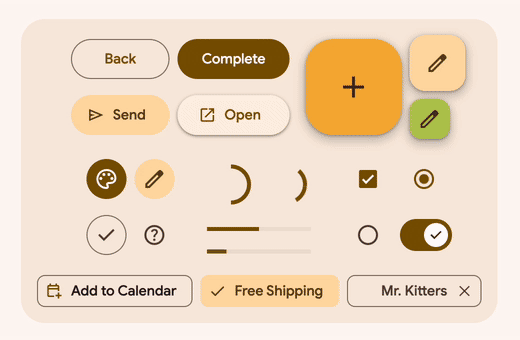This content originally appeared on Telerik Blogs and was authored by Alyssa Nicoll
Google announced Material Web Components are entering maintenance mode. Now, what does that mean for you?
MWC Google Announcement

Last month, Google made an announcement on the GitHub repo for Material Web Components. MWC is not being deprecated, but the resources that were being put toward their development and future roadmap are being reassigned to other tasks. They will still be available for use, but they will not be receiving any large updates (internally or from the community). See the announcement linked above for more details.
I think it is important at this point to note the differences in terminology.
Definitions
Material Web Components
Material Web Components: @material/web is a library of web components that uses Material UI. This UI library can be used with any framework on the web, since MWV components are built with vanilla HTML web components.
https://github.com/material-components/material-web & https://m3.material.io/develop/web

Material UI (Material 3)
Material UI: Often called Material 3, this is the latest version of Google’s open-source design system.

Material for Angular (Angular Components)
Material for Angular: This UI component library and tooling (CDK is included in this term) is maintained by the Angular team at Google and the community.
https://material.angular.io/ & https://github.com/angular/components

These are UI components that developers can drop into existing applications with these goals/features:
- Internationalized and accessible so that all users can use them.
- Straightforward APIs that don’t confuse developers.
- Behave as expected across a wide variety of use cases without bugs.
- Behavior is well-tested with both unit and integration tests.
- Customizable within the bounds of the Material Design specification.
- Performance cost is minimized.
- Code is clean and well-documented to serve as an example for Angular developers.
Material CDK
Material CDK: The Component Dev Kit (CDK) is a set of behavior primitives for building UI components and is considered part of “Material for Angular.”
https://material.angular.io/cdk/categories & https://github.com/angular/components/tree/main/src/cdk

This side of Material for Angular is the tooling that helps developers build their own components and includes things like:
- Drag-and-drop: Directives enabling drag-and-drop interactions.
- Layout: Utilities to respond to changes in viewport size.
- Clipboard: Helpers for working with the clipboard.
So What Is Changing with Material?
Now that we have defined these terms, we can talk more easily about what exactly is being put into maintenance mode:
Only Material Web Components that utilized Material UI are being put on pause. The Angular CDK, Material for Angular and the Material UI Design System as a whole are not being affected by this announcement.
But What About the Future of Material for Angular?
The Angular team released a post addressing these changes and concerns within the Angular community. The maintenance mode of MWC should not affect users of Material for Angular (or even Material UI). The Angular team will be making a fork of the components and will continue to develop them as normal.
When to Choose What Component Library?
Often, I get the question of which is the best Angular UI component library. When should I choose Kendo UI for Angular vs. something like Angular Material, PrimeNG or something else?
The truth is it is highly dependent on your project requirements and customization needs.
Angular Material is a good option to start building your app with. It offers 35 components, four main design themes and 21 CDK primitives to build custom components. Additionally, it has recently been updated to align with Material Design 3. If you have a complex scenario that requires a lot of customization and advanced capabilities, however, you might need to consider a more advanced solution that offers more flexibility.
PrimeNG, for example, offers a slightly larger set of basic open-source Angular UI components. It is beginner-friendly, so it could be a good choice if you are just starting with Angular. If you are creating business apps with complex requirements, you might find yourself wanting more—especially in terms of customization, consistent API and documentation and more advanced components.
Progress Kendo UI for Angular offers a collection of 120+ fully native Angular components built specifically with business apps in mind. You get a full component set including advanced grids, charts, editors and even a spreadsheet. It also blends in perfectly with Angular Material, enabling you to indistinguishably use them side by side. So if you have already started with Material, your work is not lost!
Additionally, you can also utilize a powerful ThemeBuilder for granular customization, a variety of themes, Figma kits, design documentation and—soon—page templates and building blocks to help you build apps even faster.
This content originally appeared on Telerik Blogs and was authored by Alyssa Nicoll
Alyssa Nicoll | Sciencx (2024-07-25T08:11:06+00:00) What’s Going on with Material?. Retrieved from https://www.scien.cx/2024/07/25/whats-going-on-with-material/
Please log in to upload a file.
There are no updates yet.
Click the Upload button above to add an update.
